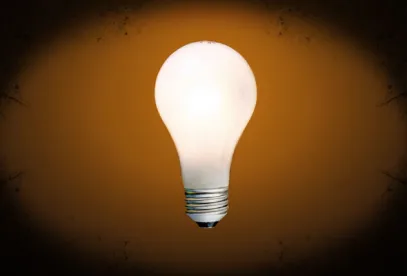I. Introduction
On June 18 the EPA announced a proposal for emission guidelines for States to follow in developing their respective State Implementation Plans (SIP) to address greenhouse gas emissions from existing coal fired electrical generation units (EGU) in the United States, commonly referred to as the Clean Power Plan. After public comments are received, it is expected that the rule will be finalized by June 2015 and States will be required to submit their SIP by June 2016. The deadline for public comments on this proposed rule is December 1, 2014.
Since Wisconsin has more than 60 percent of its based load electrical generation provided by coal fired EGU, this rule will have an enormous impact on the Wisconsin based utilities and their customers. Given the strategies for compliance proposed by the EPA in this rule package, there will almost certainly be "winners" and "losers" when this rule is finalized and implemented by Wisconsin. Godfrey & Kahn recommends that affected Wisconsin parties should begin planning now for the future implementation of this rule in order for potential winners to maximize their opportunities and potential losers to mitigate their costs associated with this far-reaching EPA rule package.
This newsletter will provide an overview of this rule package, describe the EPA’s recommended strategies for Wisconsin to consider for implementing its SIP and suggest some planning strategies that affected parties should consider adopting now to plan for eventual implementation.
II. Overview of the Clean Power Plan
EPA’s expressed statutory basis for regulating greenhouse gas emissions for the coal fired EGU is Section 111 of the Clean Air Act. This section provides EPA with the authority to require States to develop performance standards for a category of existing sources; here large scale coal fired EGU.
This regulatory process was initiated by the EPA through the issuance of draft guidelines that States can use in adopting their respective SIP for achieving emission reductions for greenhouse gas emissions. States can use these guidelines as a "roadmap" for how to meet the EPA targeted emission reductions for EGU in that State by the compliance deadline of 2030.
Generally speaking, the EPA has established a targeted goal of 30 percent reduction of greenhouse gas emissions from the coal fired EGU sector by 2030 compared to total emissions reported in 2012 for this sector. The EPA’s goals are expressed as emission rates specifying numerical pounds of carbon dioxide emitted for each unit of electricity generated (here the unit is megawatt/hour (MWh)). Each State is provided authority under the rule to convert this emission rate goal to a total tons of CO2 emitted goal for all coal fired EGU in the State.
Each State is assigned a specific goal for achieving emission rates for carbon dioxide from the combined coal fired EGU sector in that State by the targeted deadline of 2030. Wisconsin is assigned an emission rate of 1,203 pounds of CO2 per MWh. This represents an approximate 30 percent reduction in emission rates for coal fired EGU to achieve in Wisconsin by 2030.
III. Guideline strategies for States to implement the EPA goals
In the proposed rule, the EPA has proposed four strategies (Building Blocks) that States may consider using to achieve the carbon dioxide reduction goals in their respective SIP’s. It is important to note that these four Building Blocks are not considered to be the exclusive means to achieve these goals; rather they are the EPA’s recommended strategies for States to consider. The four EPA recommended Building Blocks for reducing carbon dioxide emissions from coal fired EGU are the following:
1. Improving the emission rate of carbon dioxide emissions from the covered facility.
2. Increasing the use of existing natural gas fired combustion EGU.
3. Expanding the use of low carbon renewable energy generating units.
4. Expanding the use of demand side energy efficiency programs for EGU customers.
The EPA described how these four Building Blocks would contribute to achieving the overall stated goals for each State. For purposes of Wisconsin, the EPA has recommended an increase in renewable energy goals as a percentage of existing base load generation to 11 percent.
With respect to the demand side management Building Block, the EPA has established recommended targets of 1.5 percent and 1.0 percent saving targets for Wisconsin under the energy efficiency Building Block. These saving targets would result in an estimated cumulative annual electricity savings of 11.8 percent by 2029 and 6.2 percent by 2024, respectively for Wisconsin.
Wisconsin has broad authority to determine how it will achieve the 30 percent reduction target for coal fired EGU in the State and it is not limited to these Building Blocks when it submits its SIP to the EPA on or before the June 2016 deadline. The challenges for the Department of Natural Resources (DNR) in preparing these implementation plans are plentiful; not the least of which is that many of the practices underlying the renewable energy and energy efficiency Building Blocks are regulated by and under the jurisdiction of the Public Service Commission (PSC).
IV. Strategies for Wisconsin customers
Wisconsin businesses and developers who are considering renewable energy and energy efficiency projects should consider the potential implications of the Clean Power Plan. Here are some strategies to consider now for renewable energy and energy efficient projects that are under consideration:
1. Retroactive carbon dioxide reductions
The Clean Power Plan will allow credits for reductions of carbon dioxide emissions for new building efficiency and renewable energy projects installed after June 2014. Parties to newly installed projects should consider the future carbon dioxide emission reduction values for such reductions that may apply to such post June 2014 projects.
2. Advocacy for carbon dioxide reductions for renewable energy
It is not clear what types of renewable energy projects will qualify for carbon dioxide emission reductions under the Clean Power Plan. Project developers should be advocating for rights to own and sell such reductions in developing State plans for renewable energy projects. For example, developers of combined heat and power (CHP) projects should advocate for the inclusion of the thermal energy component as well as the electricity generating component for calculating carbon dioxide reductions associated with energy production for such CHP facilities. Similarly, developers of digesters and the associated methane reductions attributable to digesters that produce gas for electrical generation should advocate for recognizing carbon and methane reduction attributes associated with such facilities.
3. Reliable quantification for renewable energy (RE) / energy efficiency (EE) projects
The Clean Power Plan will require States to provide reliable models to estimate the carbon dioxide emission reductions associated with RE and EE projects. Parties involved in the planning for these projects should use the most reliable methods to estimate reductions attributable to the project in order to capture the maximum future value for these projects under the Clean Power Plan.
4. Who has the rights for carbon dioxide reduction for qualified RE/EE projects?
Until Wisconsin adopts a SIP and it is approved by the EPA, it is not clear which parties have the right to claim the value of CO2 reductions and whether such reductions are tradable to the State or the utilities to meet the Clean Power Plan mandatory CO2 reduction targets. Until regulatory clarity is afforded parties to RE/EE projects, the parties to these projects should make it clear in their respective contracts as to which contracting party retains value attributed to such CO2 reductions that may be recognized in the future from these projects.
5. Municipal building codes and the roles of cities
Cities may play a very important role in promoting carbon dioxide emission reductions by encouraging/mandating more energy efficiency components for new buildings in zoning regulations. The CO2 emission reductions resulting from such projects should be quantified as part of the zoning code compliance requirements. The municipality should consider specifying which party (the city, developer, or tenants, etc.) retains the right to any CO2 reductions resulting from such energy efficiency, zoning compliant projects.
6. Interested party review and comments
The State of Wisconsin will be entering a very important phase of developing the components of its SIP that will be required for the Clean Power Plan. It is certain that both the DNR and PSC will be soliciting comments as to the manner and methods for which RE/EE projects will be considered as part of the Building Blocks under the Wisconsin SIP. Advocates for RE/EE projects should be vigilant to comment on proposed strategies to be considered by these agencies over the course of next year to maximize value for the contracting parties involved in such projects in this State. The DNR and PSC will likely seek comment as to whether trading of quantifiable emission reductions generated by qualified RE/EE projects should be part of Wisconsin’s SIP. Trading of emission credits could be another potential enormous value attribute for such qualified RE/EE projects and contracting parties to such projects need to be heard on this topic with the DNR and PSC in the development of these policy topics.
V. Parting thoughts
The State is entering into one of the most significant policy periods to develop strategies for complying with the Clean Power Plan. Interested businesses should be vigilant in taking advantage of opportunities to share the formulation of State energy policy to maximize opportunities and mitigate risks for mandated CO2 emission reductions in Wisconsin for Wisconsin businesses. In addition, parties who are considering RE/EE projects need to consider the future impacts of the Clean Power Plan in their contractual negotiations with interested parties in these projects.
We live in interesting times!



 />i
/>i

